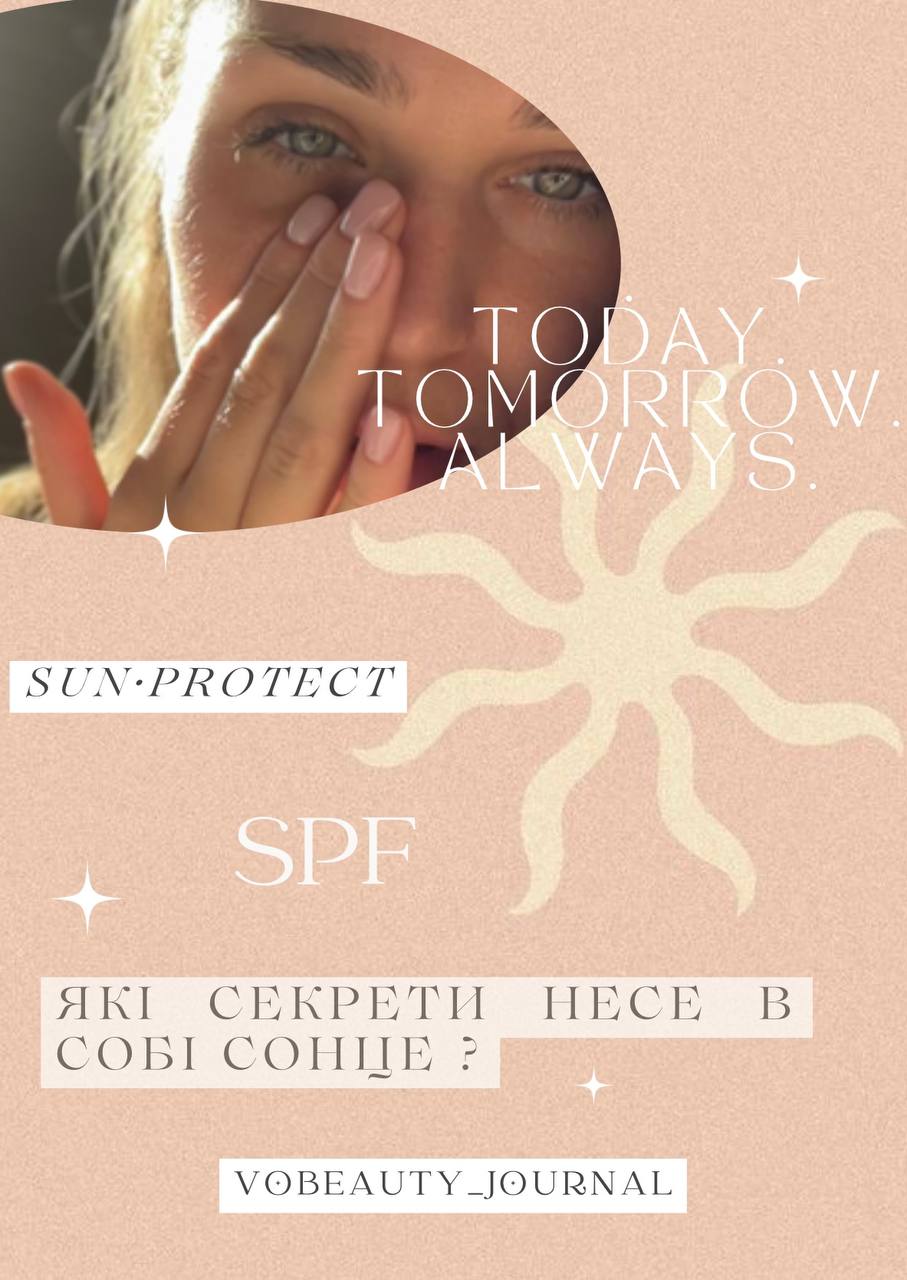SPF Sunscreen
What are the enigmatic characteristics of the sun, and what is the rationale behind the necessity of utilizing sun protection factor (SPF)?
About sun protection.
I consistently underscore the importance of year-round utilization of SPF. This is attributed to the persistent potency of UV-A and UV-B radiation across all seasons.
It is imperative to acknowledge that UV exposure can pose significant risks in the absence of dependable safeguards, such as products containing SPF.
UV RadiationIn addition, UV radiation directly affects photoaging and chromostaining. Both processes pertain to more profound alterations within the skin’s layers, thereby distinguishing themselves from each other. However, they manifest in a common outcome to a greater extent – skin thinning, sagging, the formation of both deep and fine wrinkles, senile angiomas, keratoses, pigmentation irregularities, and others.
Elastosis is yet another manifestation of ultraviolet influence – this occurs due to the fact that UV disrupts the structure of elastin fibers, reducing the density of the microfibrillar network in the dermis. Furthermore, it elevates the level of proteolytic enzymes, leading to the degradation of collagen and elastin fibers.
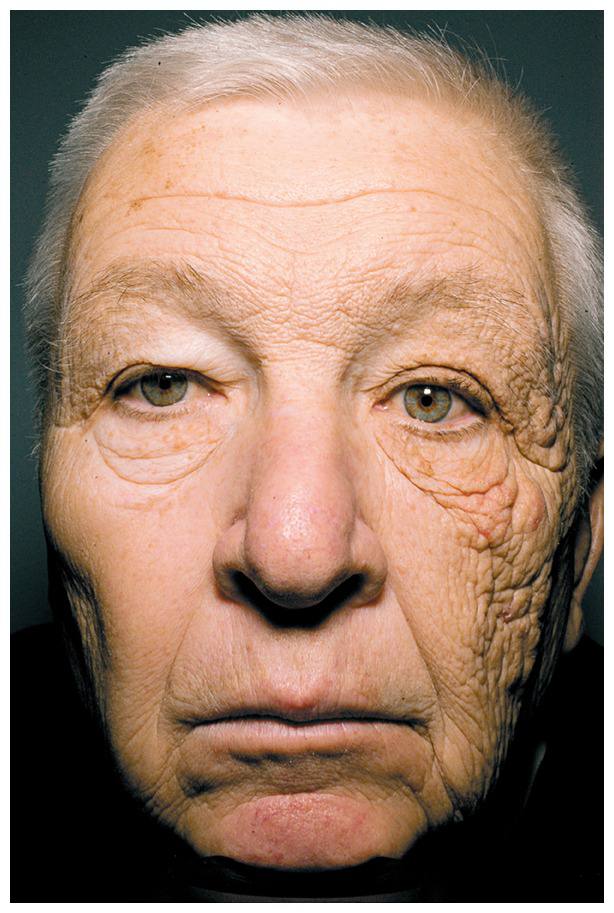 In the image, there is a well-known depiction of a 69-year-old male who spent 28 years behind the wheel of a truck. Throughout, the window exposed his face predominantly to sunlight, affecting solely the left side of his visage.
In the image, there is a well-known depiction of a 69-year-old male who spent 28 years behind the wheel of a truck. Throughout, the window exposed his face predominantly to sunlight, affecting solely the left side of his visage.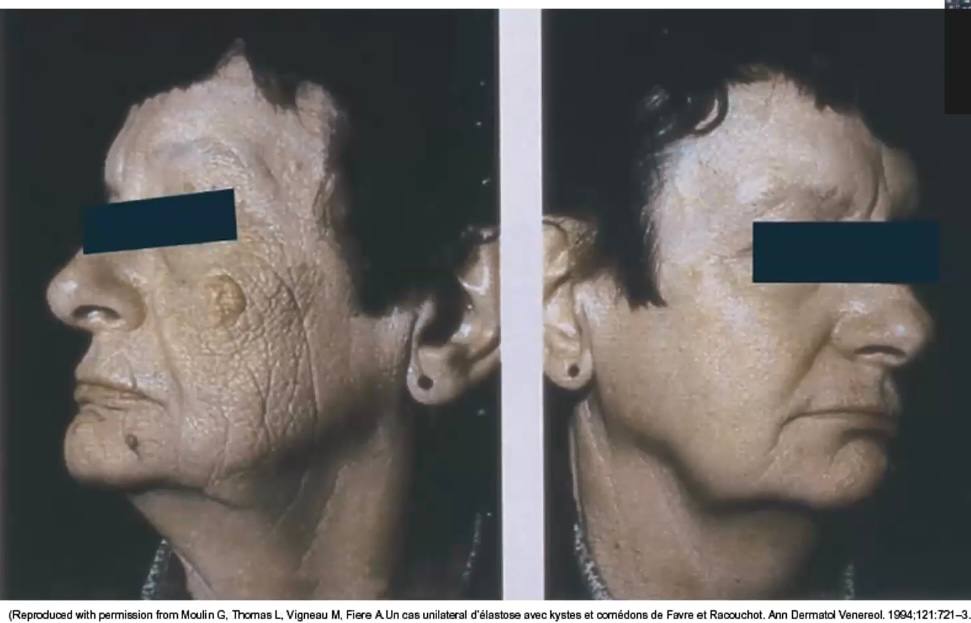 This is a photograph of a woman who spent approximately 15 years working in an office near a window, through which sunlight consistently impacted only one side of her face.
This is a photograph of a woman who spent approximately 15 years working in an office near a window, through which sunlight consistently impacted only one side of her face.
Presently, we have two highly secure options for sun protection cosmetics:
- Physical Filters (or Mineral):
- Next-Generation Chemical Filters
How do they work?
- Physical filters reflect UV radiation when it strikes them. There are only two physical filters: zinc oxide and titanium dioxide.
Pros:
- They are highly safe (suitable for all, even children)
- UV-A/UV-B protection
- Requires reapplication every 2-3 hours
- Ideal for problematic or irritated skin
- Excellent choice for beach activities
Cons:
- Can leave a white cast
- Can complicate application of other cosmetics
- Chemical filters absorb UV radiation and convert it into less harmful heat energy. Examples include Tinosorb M, Tinosorb S, Mexoryl XS, Uvinul A, Neo Heliopan AP.
Pros:
- High safety level
- Requires reapplication every 5-6 hours
- Can be used with other cosmetics (under makeup)
- Lighter texture compared to physical filters
- Offers additional moisturizing effects
Cons:
- Can occasionally cause chemical irritation
- Might lead to excess shine for oily skin types
There are also older-generation chemical filters: • Oxybenzone (Avobenzone + Octocrylene) or ButylMethoxydibenzoylmethane • Benzophenone • Homosalate • 4-Aminobenzoic acid (PABA) • Benzophenone 1, 2, 3, 4, 5, 6, 7, 8, 9, 10, 11, 12 • Octocrylene
If you find these names in the ingredient list, they indicate older chemical filters which should be avoided as they are harmful. They are already banned for use in many countries.
How to Choose the Number?
All sunlight that reaches your skin is 100%. Divide 100% by the SPF index, e.g., SPF 30. 100 / 30 = 3.3%. Only these 3.3% of sunlight will reach your skin, while the remaining 96.7% will be blocked.
• SPF 15 – Blocks 93% of UV rays • SPF 30 – Blocks 97% of UV rays • SPF 50 – Blocks 98% of UV rays
In terms of choosing the number, it depends on the season, location, and your skin type.
Additionally, consider your skin’s characteristics and the product’s consistency when making a choice:
• For dry skin, creams or lotions are preferable; • For oily and combination skin, gels, lotions, or fluids are better suited.
Despite all of this, you should not be afraid of the sun, as it is indeed essential and beneficial for us in various ways:
• Sunlight’s warmth and light consistently uplift our mood and contribute to a positive day. • It aids in the synthesis of vitamin D and its precursors. • Additionally, it assists in the treatment of certain medical conditions.
You simply need to be aware of all the risks and know how to effectively protect yourself from them!
Furthermore, we have curated a selection of SPF products available for purchase on our website VOBEAUTY.COM.UA
To explore and view the product on our website, simply click on the image!
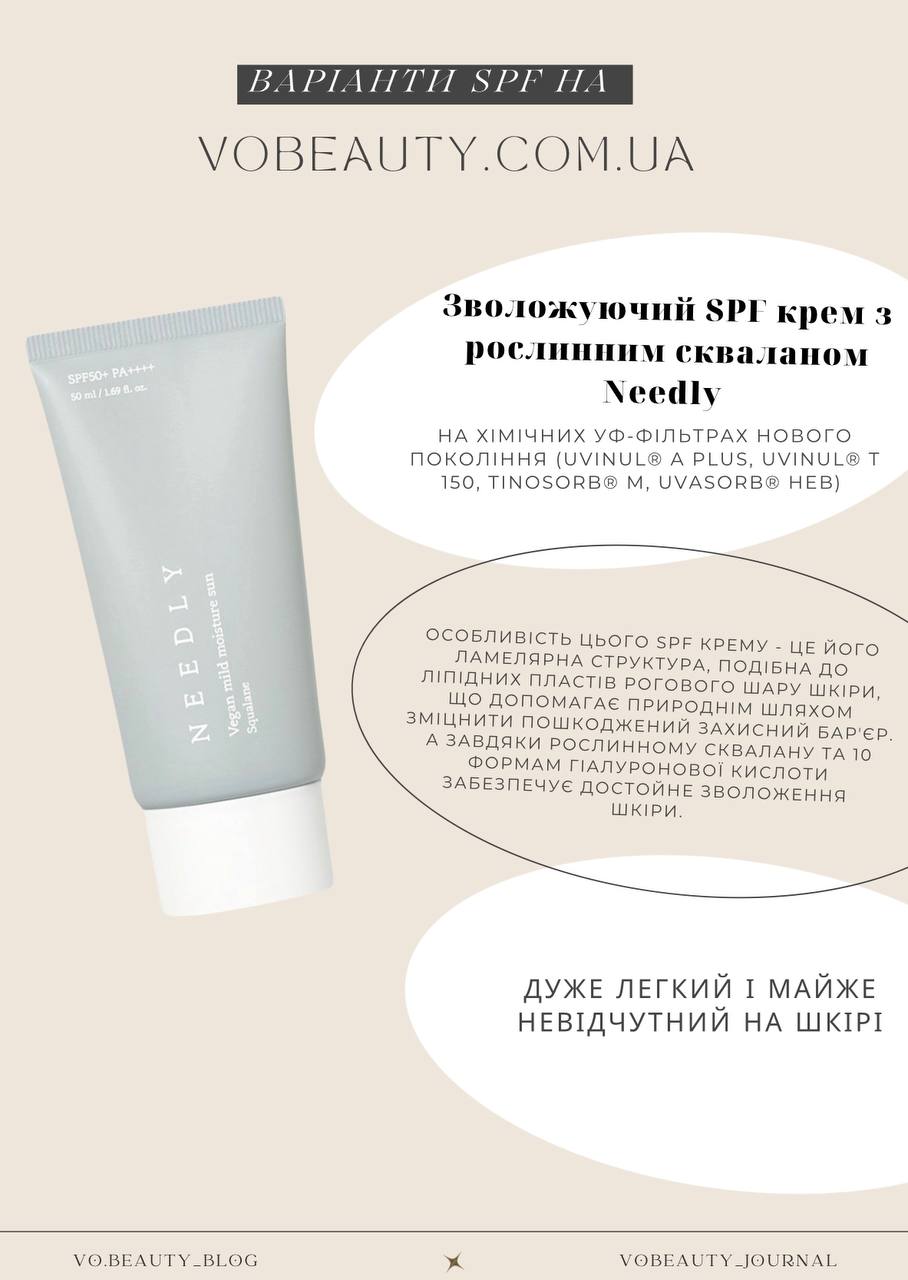
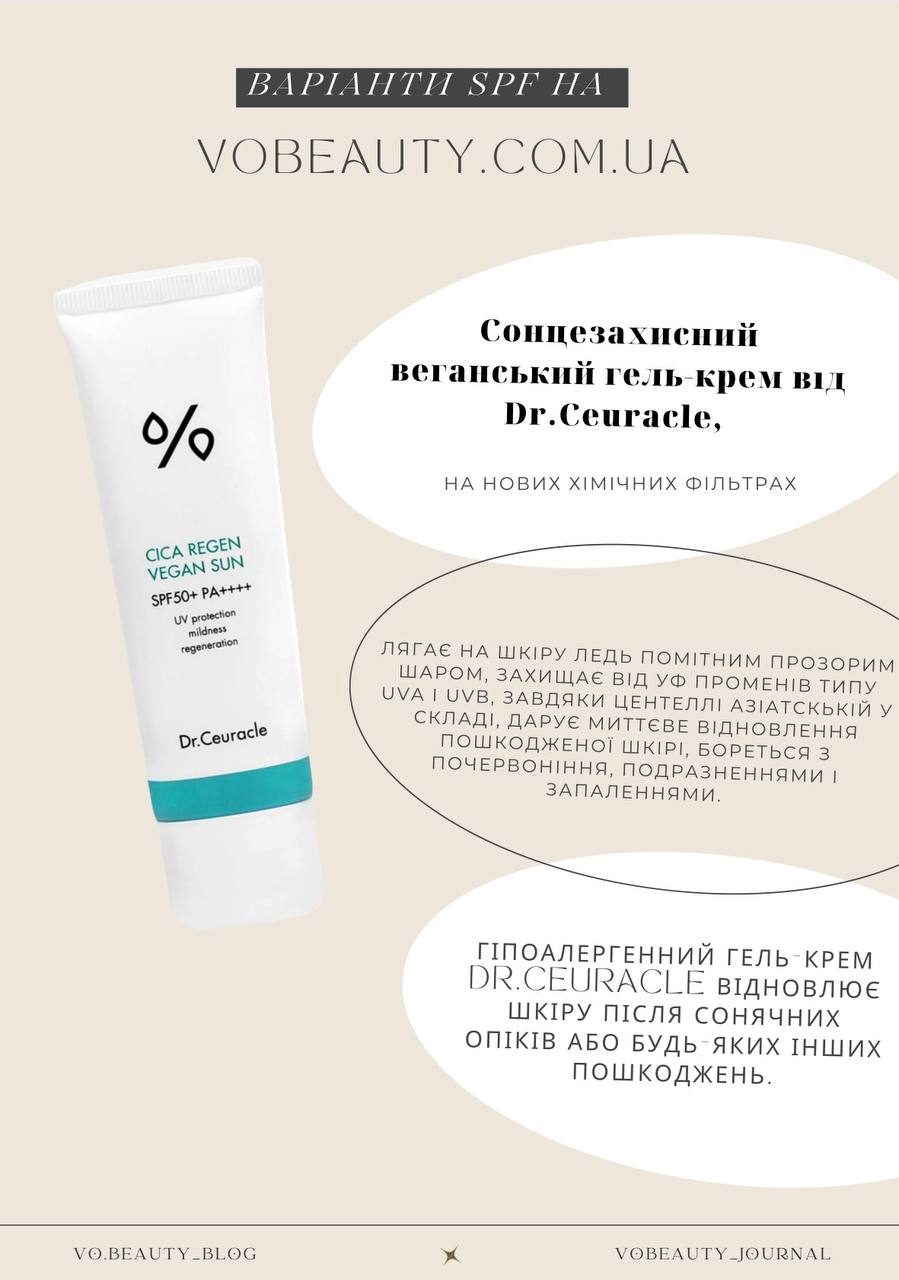
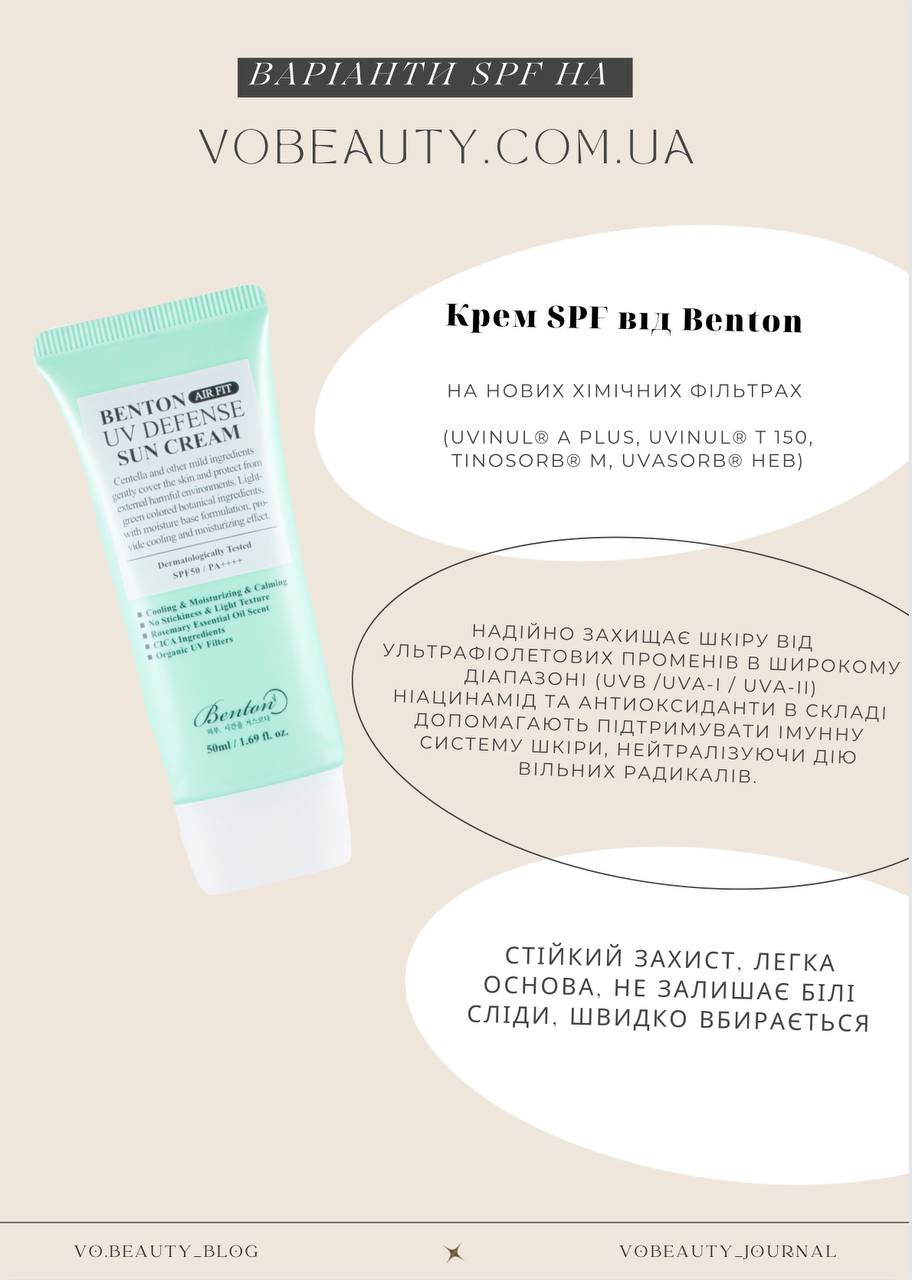
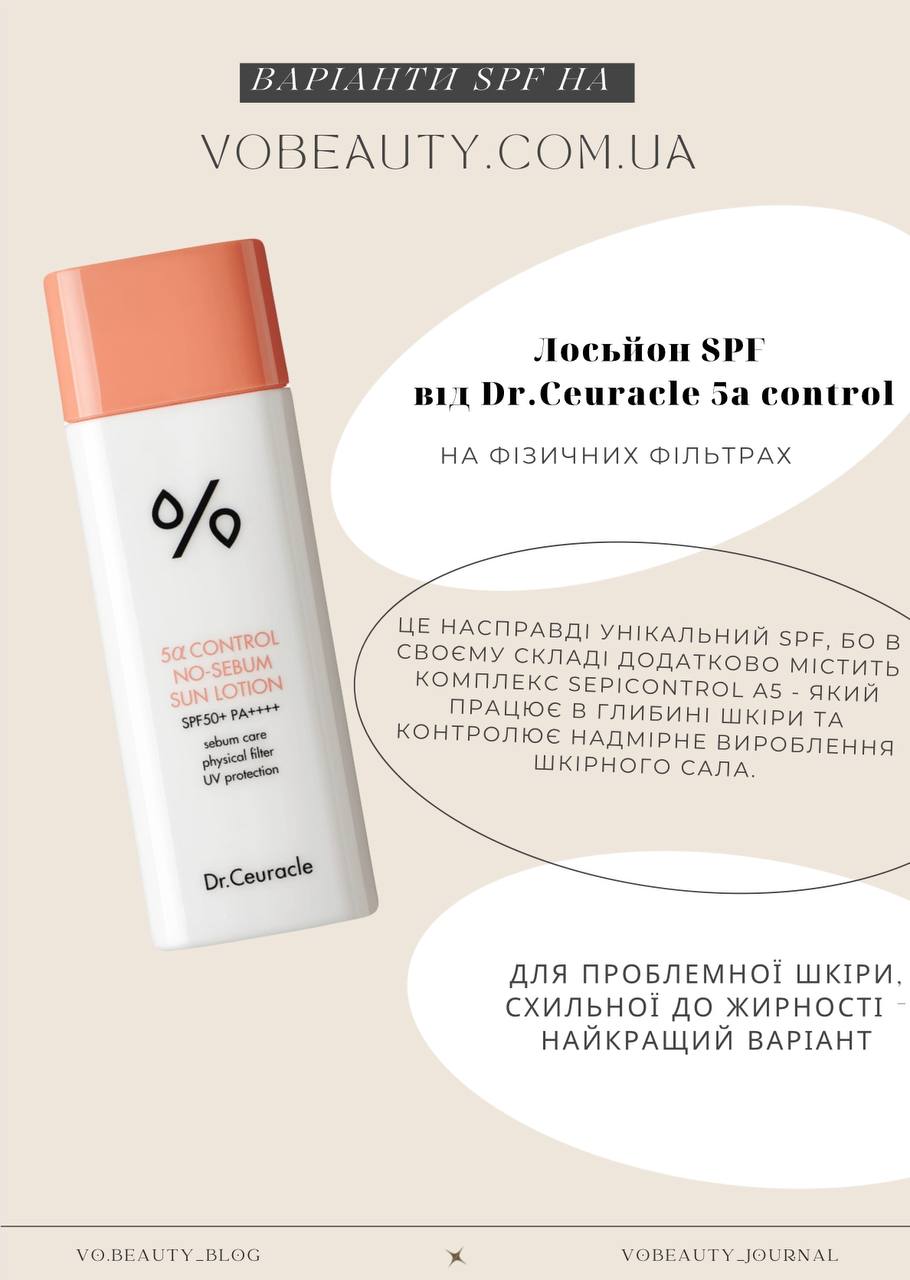
If you found the article enjoyable, please consider sharing it on your social media platforms!


 Українська
Українська